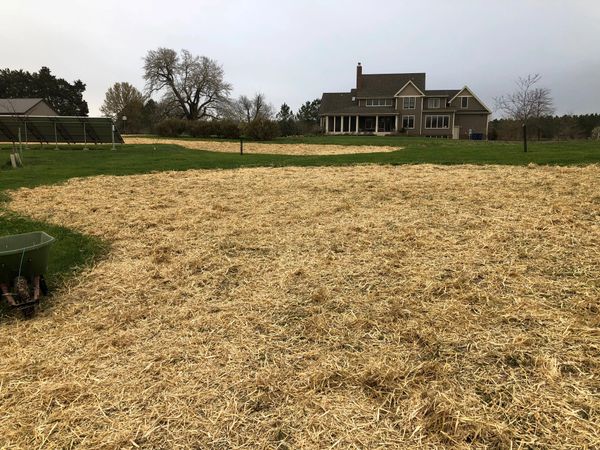
Lawn Weeds Feed Bees
Creating Pollinator Habitat
Conversion of managed turf lawn area to native grasses and wildflowers provides immediate and diverse environmental benefits, including wildlife habitat, pollinator food sources, water quality improvement, reduced mowing and greenhouse gas emissions, and natural beauty.

Information and Resources
"Meadows are plant communities comprised mostly of herbaceous (non-woody) plants. The open, sunny areas attract an abundance of wildlife from small mammals and grassland birds to their predators like hawks and owls. These areas are important for nesting, food, shelter and even courtship displays. Despite their importance, the number of meadows around Maryland has declined. However, you can create meadow habitat in your backyard to help increase the survival of species which depend on this unique habitat.
Once established, meadows attract more wildlife and require less maintenance than lawns. In addition, meadows need less water and little to no fertilizer, saving you time and money as well as greening your landscape." (MD Dep't Nat. Resources)
Regardless of whether you're considering establishing a 10'x10' butterfly garden or acres of meadow, any conversion of lawn to native plants is beneficial to honey bees, native pollinators, other wildlife, and water quality.
Pollinator Organizations and Information:
- Pollinator Partnership
- US Fish & Wildlife Service - Pollinators
- Maryland Dep't of Natural Resources
- All About Pollinators
- Creating a Wild Backyard - Wildflower Meadow
- Pollinator Stewardship Council
- National Association of Conservation Districts - Pollinators
- Chesapeake Wildlife Heritage
- 2 Million Blossoms (new quarterly magazine devoted to pollinators) (Jan. 2020 issue available for free online viewing or download here)
Native Plant and Seed Sources:
- Garden Treasures (Easton, MD)
- Eastern Shore Nurseries (Easton, MD)
- Environmental Concern (St. Michaels, MD)
- Ernest Conservation Seeds (Meadville, PA) - Pollinator Favorites
- John S. Ayton State Tree Nursery (Preston, MD)
- Cold Stream Farm (Free Soil, MI) - Bare root native shrubs and trees.
Information you may find useful in considering conversion of an area of lawn or management of farms for pollinator-friendly habitat.
Evolution of Our Backyard meadow (planted Apr. 2018)
2018










2019







2020

























































Cookie Policy
This website uses cookies. By continuing to use this site, you accept our use of cookies.

